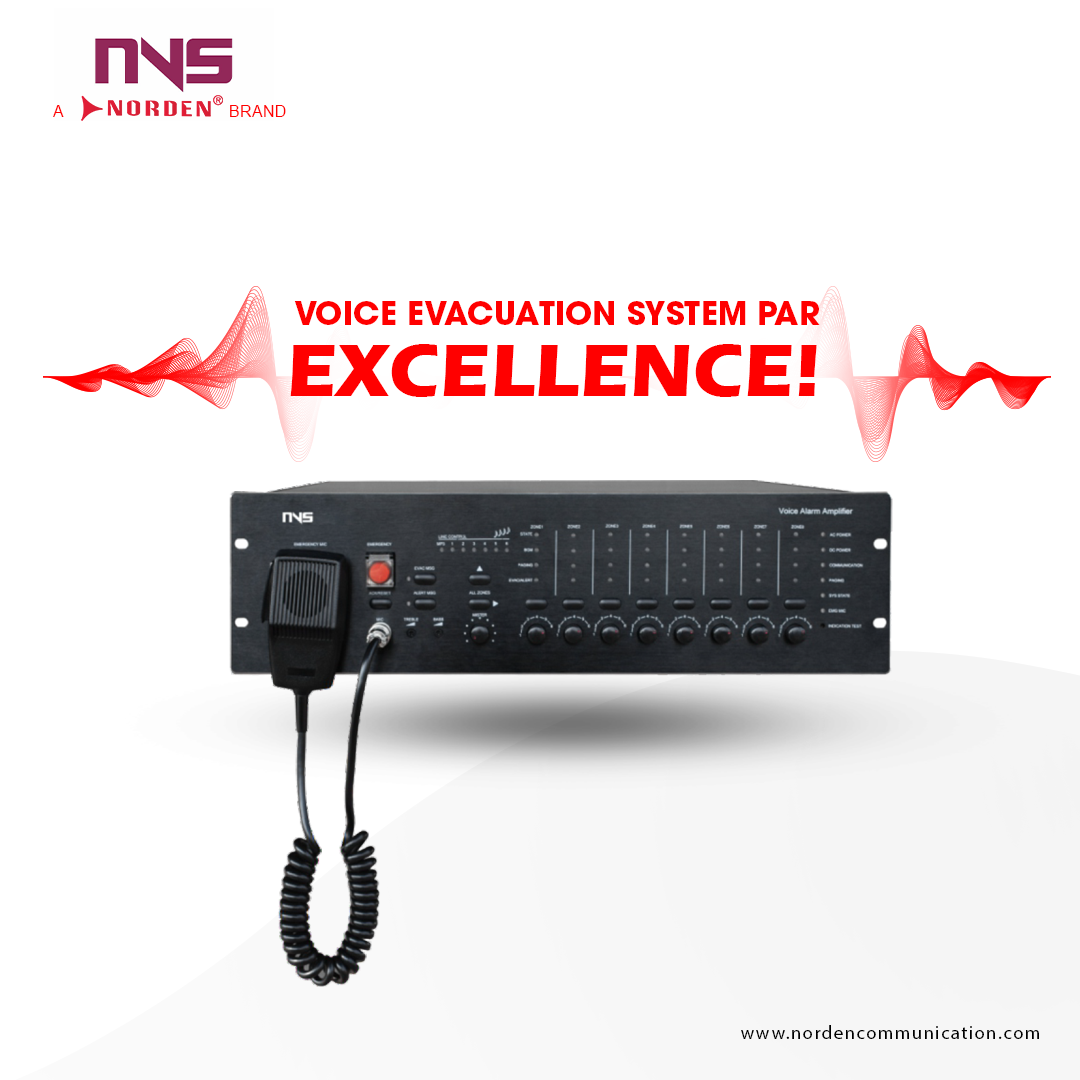Fill out your details and our executive will get in touch with you soon.











































































































































Voice Evacuation Systems are obviously more than just a fire alarm. For every organization, however small or big it is, the life of employees is of utmost importance than the business. Employees are attracted to a workplace that is free of injuries and accidents. Employees are happier and more productive in such a setting. Therefore it is the prime duty of an employer to ensure the safety of employees. Voice evacuation systems play an integral role in guaranteeing workplace safety.
They are public address systems specially designed for emergency situations such as a fire break-out or other unprecedented events. They are also known as Voice Evac Systems and are usually an indispensable part of fire alarm systems. During an emergency, the system uses spoken messages to evacuate public facilities or buildings in a timely manner.
People will react without misunderstanding or panic in an emergency if they receive a clear, understandable message, according to research.
The following is an example of a typical alarm message: "Please pay attention: an emergency has been reported. Proceed calmly to the nearest exit and depart the building as soon as possible." Rather than buzzers and horns, a voice is comparatively less terrifying (not producing panic) and can provide specific instructions to the public during a difficult situation.
These voice notification systems are most typically implemented in two categories of building occupancies.
When more than 50 people gather, but they are unfamiliar with exit locations or fire emergency signals, voice systems can direct them to stay calm and evacuate the building without panicking.
Evacuating a building in its entirety is highly impractical. In such a situation, zonal evacuation of the occupants is utilised to perform an ordered evacuation of floors or areas within the building. Voice evacuation systems can play an active role in the successful completion of evacuation of occupants by giving proper guidance for each area or zone.

The key distinction between voice evacuation systems and typical fire alarm systems is that voice evacuation systems deliver spoken messages rather than horns and sirens to communicate with people. Traditional alarms can be uncomfortable, anxiety or panic inducing, resulting in a chaotic evacuation. The sound of an active alarm, which is limited to loud sirens and brilliant strobe lights, does not provide guidance for evacuation. Voice evacuation systems can reduce panic by leading residents out of the building through the safest route using clear and consistent directions.
Furthermore, many personnel may dismiss fire alarm sirens as false alarms or drills. During an alarm event, the presence of a voice, especially one specialised to an emergency, can effectively instill a sense of urgency among the listeners.
Traditional fire alarms can alert people only to the possibility of a fire outbreak. Whereas mass notification systems like voice evacuation systems can alert residents to a variety of life-threatening conditions. Severe weather, gas leaks, chemical spills, a hostile intruder, and even train derailment are all examples of these scenarios.
Depending on an area or a locality, an emergency communication system can be customised to cater for individual demands. A voice evac system provides a comprehensive manner of informing residents of a threat, as fire isn't the only danger a building or organisation might face.
While standard fire alarms can only be linked to your security system, voice evac systems can be linked to other building systems to give voice message, email warnings, and paging. Thus the voice evac system is a comprehensive building solution.
According to studies conducted by the British Standards Association (BSI), those hearing a tone signal take more than six minutes to leave a facility they are unfamiliar with, whereas those hearing a recorded message leave in roughly four minutes. Live announcements are much more rapid, taking less than two minutes to complete.
During an emergency, VA systems can give people clear, vocal directions. There is also a facility to select a specific message from a pool of pre-recorded messages depending upon the current situation at hand. These systems also have the ability to cancel false alarms and announce all clear messages.
Voice evacuation systems can manage controlled and gradual or 'PHASED EVACUATION' with a combination of clear pre-recorded warnings and live announcements to specific areas in stages. Typically, the most dangerous places are evacuated first, while surrounding areas (zones) are placed on ‘alert.' The voice alarm system operates on its own, although all controls can be overridden by fire officers or building control if necessary.
Traditional fire alarms alert building inhabitants to a problem, but they only provide limited information. A voice evac system provides more information about the nature of the alarm and also educates the public on how to respond and further actions to take. Along with the evacuation, successful relocation is also possible with the help of voice evacuation systems.
Voice alarm systems (VAS) can be used to broadcast ads or background music as well as make public address announcements. All broadcasts, whether live announcements or continuous music, can be distributed to all or only chosen regions of the site (referred to as zones).
Even if there is a power outage, the system will continue to function with the help of battery-backup.
Today's global market has a wide range of voice evacuation systems to choose from. Knowing all of the rules and regulations for a voice evacuation system can be difficult to learn on your own. Norden Communication will be delighted to assist you with the installation of one of these systems.
We have the resources and technological know-how to make it happen, whether you decide to install a voice activation system or chat about the solutions that best suit your needs. We are dedicated to providing you with a complete system that is tailored to your facilities, business, and demands. Contact us today for more detailed information.

















